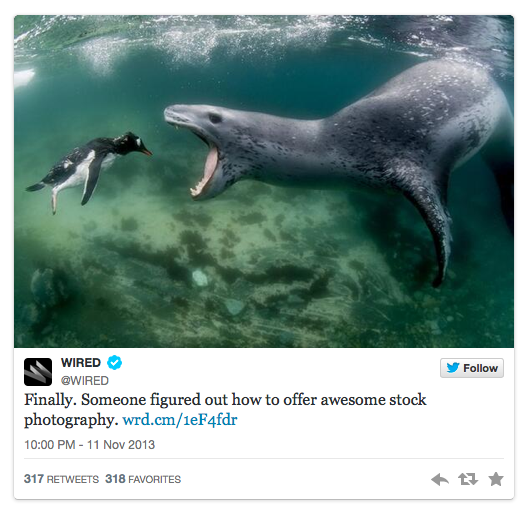Why image is everything on social media
29 Nov, 13 | by BMJ
Social media marketing has evolved significantly over the past few years and keeping up with current trends can be crucial for success. One of the biggest changes we’ve seen is the shift towards image-centric marketing rather than traditional text.
According to Trend Reports, between 65 and 85 percent of people describe themselves as visual learners, which means that they digest information more easily by viewing an image than reading text. It’s hardly surprising, then, that image-based social networks such as Pinterest and Instagram are enjoying such high levels of user activity. Even academic journals, such as eLife and PeerJ, are opting for big photos and a clean, navigable design. Not to be left behind, more established social networks are now adapting their designs to meet these changing user needs.
Back in March, Facebook revealed the first major update to its News Feed since the feature launched nearly seven years ago. The new look was a drastic departure from the Facebook of old, which many users complained had become too cluttered. The focus on stories within the feed is now far more visual. Greater emphasis is given to images, which are now much bigger. Photos now make up nearly 50% of news feed stories and are front and centre. According to Kissmetrics, photos will receive 53% more Likes, 104% more comments and a whopping 84% more click-throughs on links.
Twitter’s new design, revealed last month, follows Facebook’s example by giving much more prominence to images. Rather than having to click on the ‘Expand’ link to view a photo, users will now see in-line images within their twitter feed automatically. This also includes short video (i.e. see the 6-second Vine video below).
Publications have used this opportunity to turn tweets into the kind of story previews already seen on Facebook. Not only does this make tweets more aesthetically pleasing but it also takes up more space in a user’s Twitter stream. This seems to be paying off in the form of increased engagement (retweets, mentions, favourites and sharing), which is up to four times higher than that of a “normal” text-based tweet in some cases. Tweets are now much more than just a link and a headline.
Wired’s community director, Eric Steuer, said that engagement on @Wired‘s photo tweets has been three to four times that of text-only tweets since the Twitter update, with click-through rates up more than 125 percent.
Perhaps one of the reasons for the boom in image-based social media is the prevalence of smartphones. Not only do images work better than text on smaller screens but more users have the ability to take their own pictures and share them. Hoping that the rising popularity of photos will boost online engagement and interaction, we will no doubt see more and more brands focusing time, effort and resources on image-based social media. But what will they do when image posts are the norm and no longer stand out? Turn to video?
